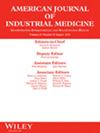A mixed-methods study on risk perception and safety practices among unorganized construction workers in a municipal area of West Bengal
Abstract
Background
The construction industry in India heavily relies on unorganized workers, who often lack adequate access to safety measures, placing them at significant risk of accidents and injuries. The objective was to determine risk perceptions of construction workers, and explore their safety practices, facilitators, and barriers.
Methods
A mixed-methods approach with a convergent parallel design (QUAN + qual) was undertaken. Quantitative strand included face-to-face interviews with 203 randomly selected building construction workers from 10 construction sites in five selected municipal wards in Kolkata. Questions pertained to socio-demographics, occupational characteristics, risk perception, and safety practices. The qualitative arm involved key informant interviews to unravel the facilitators and barriers affecting safety practices and nonparticipant observation.
Results
The perceived risk for respiratory problems due to dust, pain from carrying loads, slips, trips or falls, and heat-related illnesses was in the medium- to high category for 64.0%, 58.6%, 39.9%, and 36.5% of the study participants, respectively. However, the safety practices for these respective domains were in the good practice category for 6.9%, 4.9%, 54.2%, and 34.5% of the workers. From the qualitative arm, it was evident that availability of PPE, a conducive environment, and availability of worker-friendly technology could be important predictors of safety practices. Barriers such as time constraints and feasibility due to discomfort and expenditure were also identified.
Conclusion
Despite high-risk perception, safety practices were not consistently good among construction workers. Further research is crucial to enhance the health and safety of unorganized workers in India.

 求助内容:
求助内容: 应助结果提醒方式:
应助结果提醒方式:


